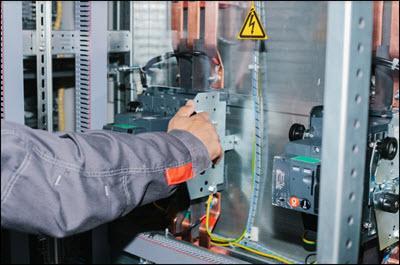Five Common Issues with PLCs & How to Solve Them
PLCs are digital electronic devices that contain programmable memory that can store a series of instructions. As PLCs have increased in functionality and decreased in cost, they have become mainstream in the world of automated systems, and have become fundamental to monitor and control both individual machines and complex processes.
Like any other device, especially those built to function in harsh industrial environments, it’s inevitable that problems will arise. Troubleshooting is necessary when working with PLCs, however, they lend themselves well to a fairly efficient diagnosis. Whether you’re currently working as a PLC technician, or aspiring to be, below are five of the most common problems you’re likely to experience while working in this field.
Module Failure of the Input/Output (I/O) System
Perhaps the most common problem affecting PLCs is a module failure of the input/output (I/O) system. The primary focus of the troubleshooting process in this case is to establish what the disconnect is between the internal situation (essentially, what the PLC thinks is happening) and the external situation (what’s actually happening).

This requires an examination of the relationship between the physical I/O modules and the I/O instructions within the PLC program. Once this relationship has been established, a single I/O module can be isolated and a program monitoring device can be used to check the internal status of the module in question.
Electrical Noise Interference
Foreign signal interference resultant of either electromagnetic interference (EMI) or radio frequency interference (RFI) can greatly affect the performance and longevity of a PLC. The potential for EMI is greatly increased if there is a large motor or similar machine that’s activated close to the PLC, or if lightning strikes nearby.
Alternatively, antennas and handheld transmitters used in close proximity to the PLC can result in RFI. Ideally, the potential for interference should be contained, as either EMI or RFI can result in costly damage and significant downtime. Handheld devices that can result in interference should be prohibited from the vicinity of the PLC, and any machinery that may be problematic should be segregated. Efforts should be made to improve shielding, grounding and power conditioning, all of which can combat most EMI and RFI problems.
Corrupted Memory
External factors, such as the aforementioned frequency interference and power disruptions, can corrupt the memory of a PLC. When this happens, the code within the PLC may become unreadable, or the PLC may not be able to read properly when it’s booted up from an unintentional shut down. The safest and most efficient way to deal with this problem is to ensure all data is copied to a redundant storage device that is kept away from interference, high temperatures and humidity.

Power Problems
Like any other machine, PLC devices require a steady and uninterrupted stream of power in order to function properly and effectively. If there’s a loss of power due to regional blackouts, grid failure, loose connections or deteriorated cables, the shock to the PLC system is great and may result in data loss. The most effective way to avoid these problems resultant of power loss is to install backup power sources that activate when the primary power source becomes compromised. Many facilities also employ batteries in their PLCs, which will prolong power until they can be shut down properly. Of course, once power resumes, the PLC can be re-booted safely.
Communication Issues
In order to function properly, PLC devices must be in constant communication with surrounding devices, such as peripherals, Human-Machine Interfaces and other smart equipement. This communication is facilitated via Ethernet cables and requires a safe, stable and consistent connection. Should this connection fail, the connected devices will not be able to carry out their functions as programmed, resulting in facility downtime.
Regular maintenance inspections should be conducted to safeguard systems from a communications failure. Engineers should ensure the physical communication network has been correctly installed, that connected devices are functioning normally and are well-suited to the system, and that firmware patches are installed when necessary to ensure the safety and security of the communication system.
While PLC devices have become increasingly mainstream and reliable, encountering the occasional problem is inevitable. This is where quick and efficient troubleshooting skills are paramount to your job as a PLC technician. Our PLC Technician Program delves deep into common PLC programming problems and best practices for troubleshooting. If you’re interested in learning more about PLCs, and pursuing this growing field as a career option, be sure to check out our PLC Technician Program.
Comments
Please contact a Program…
Submitted by iris on Thu, 07/07/2022 - 12:55
Please contact a Program Consultant, toll-free at 1-888-553-5333. to discuss the program in greater detail.
Failure of I/O Module of a PLC
Submitted by Sunday Gai Gai (not verified) on Mon, 09/05/2022 - 02:04
Am having problem with PLC I/O Module Not coming up . its only indicate a red LED Light and not running Again. Thanks
Please contact our Support…
Submitted by iris on Tue, 10/18/2022 - 08:21
Please contact our Support Center, toll-free at 1-866-279-1457 or by email at [email protected].
Plc board troubleshooting
Submitted by Ajambo Stephen (not verified) on Fri, 07/14/2023 - 09:59
Good lecture

I would love to learn more about this exciting field of PLC’s. I am a Journeyman Electrician with over 25 yrs experience.